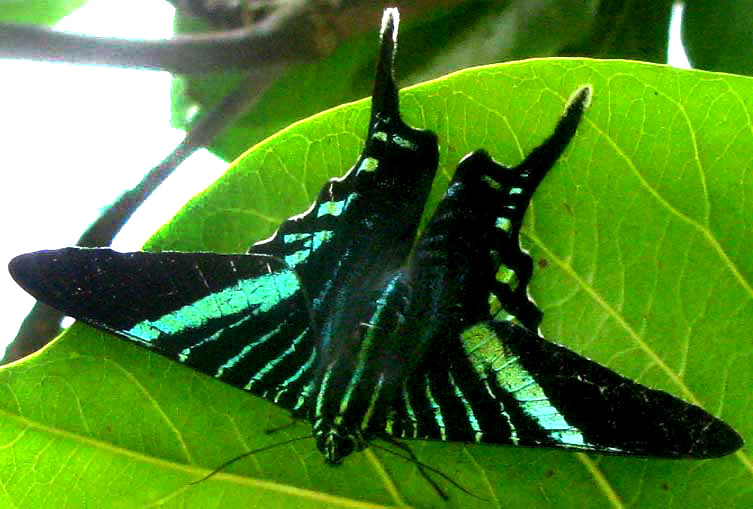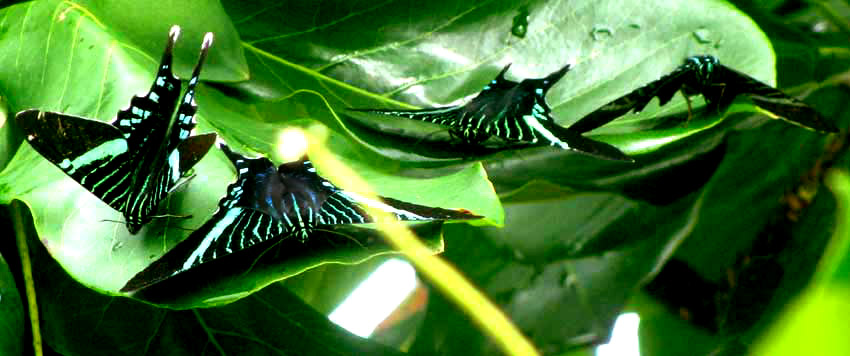Excerpts from Jim Conrad's
Naturalist Newsletter

from the September 11, 2011 Newsletter issued from Mayan Beach Garden Inn 20 kms north of Mahahual; Caribbean coastal beach and mangroves, ~N18.89°, ~W87.64°, Quintana Roo state, MÉXICO
SUNSET MOTHS
This week dark butterflies began passing, following the beach southward. They flew so fast I couldn't see much about them, other than that they were blackish, had tails like swallowtail butterflies, and they were the right size for being swallowtails. I thought of them as "migrating swallowtail butterflies."
Then during Thursday morning's post-storm drizzle, the Tropical Almond tree outside my window turned up with maybe 20 of these migrants flitting among branches, taking nectar from flowers and sometimes settling on leaf undersides. That's one leaf-sheltering above. Here and there the migrants clustered, as shown below:

The moment these images appeared on my computer screen I knew that they weren't swallowtail butterflies, if only because their bodies were too thick. Maybe they were skippers. But volunteer identifier Bea in Ontario is the specialist there, so I sent the pictures to her. At first she was nonplussed as I, but by Friday morning she had it figured out: These were not swallowtails, not skippers, NOT EVEN BUTTERFLIES!
They're Sunset Moths, sometimes called Urania Swallowtail Moths or Green Page Moths. They're URANIA FULGENS. And, once you have the name of something, then you can look it up and get its story. So...
Several species of Urania Swallowtail Moths exist, but this one, Urania fulgens, occurs from southern Texas south to Bolivia. And these moths are famous for their majestic migrations.
The caterpillars of Urania fulgens feed on a woody vine, or liana, in the Euphorbia Family, Omphalea diandra, sometimes called Jamaica Navelspurge. Jamaica Navelspurge's vegetative parts are poisonous to many or most higher animals, but the fruits are edible for humans if the poisonous embryo is removed. Thing is, the vine doesn't grow in the Yucatán, or even in Belize to our south. It's found in the Caribbean and south through tropical South America.
So, maybe the moths passing this week were returning to where they spent their caterpillar days -- where Jamaica Navelspurge grows -- after spending summer in the Yucatán just sipping nectar and surviving. Or maybe they're in transit from Jamaica or Cuba, south to Costa Rica, following the Yucatán coast from one navelspurge area to another.
Marcia says that some years she's seen large numbers of Sunset Moths roosting here overnight on Tropical Almond trees. On the Internet, entomologist Neal Smith reports the passage of millions of them through the Panama Canal Zone in the fall of 1969, flying an estimated 60-100 miles each day (100-160km). Smith's interesting paper is available online in PDF format at http://academic.uprm.edu/publications/cjs/VOL12/P045-058.PDF.